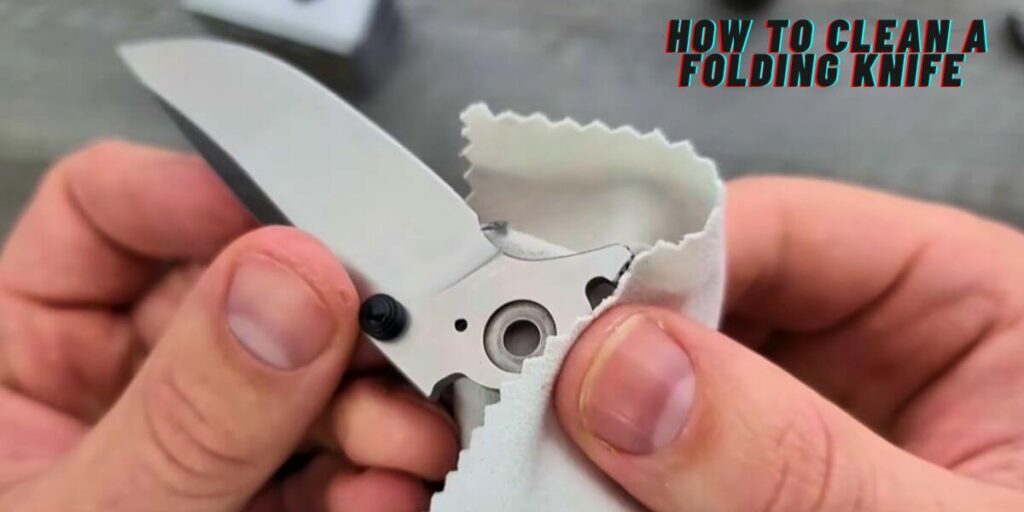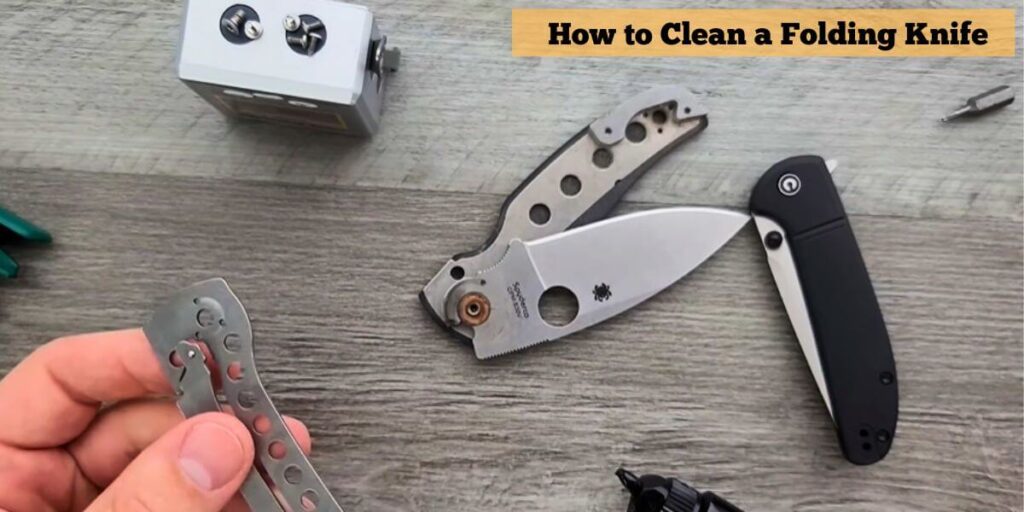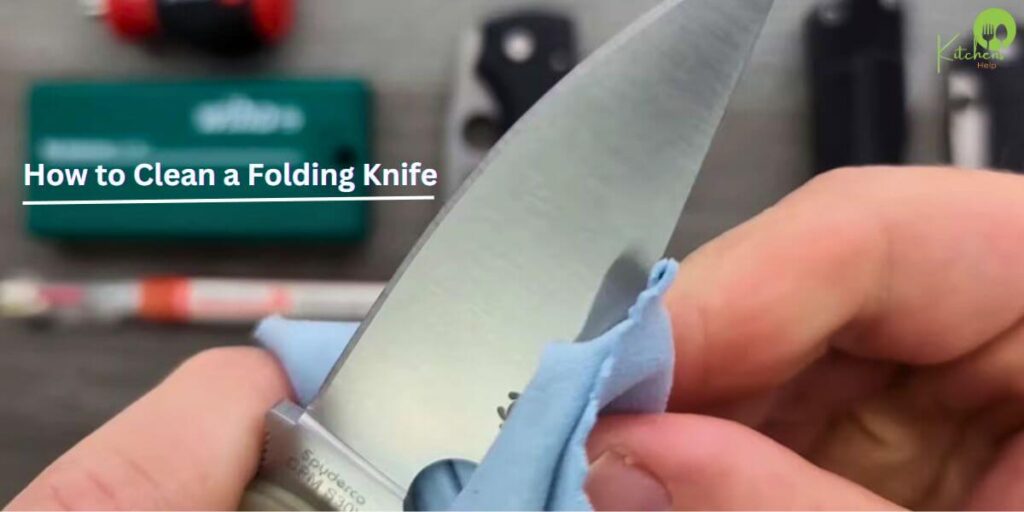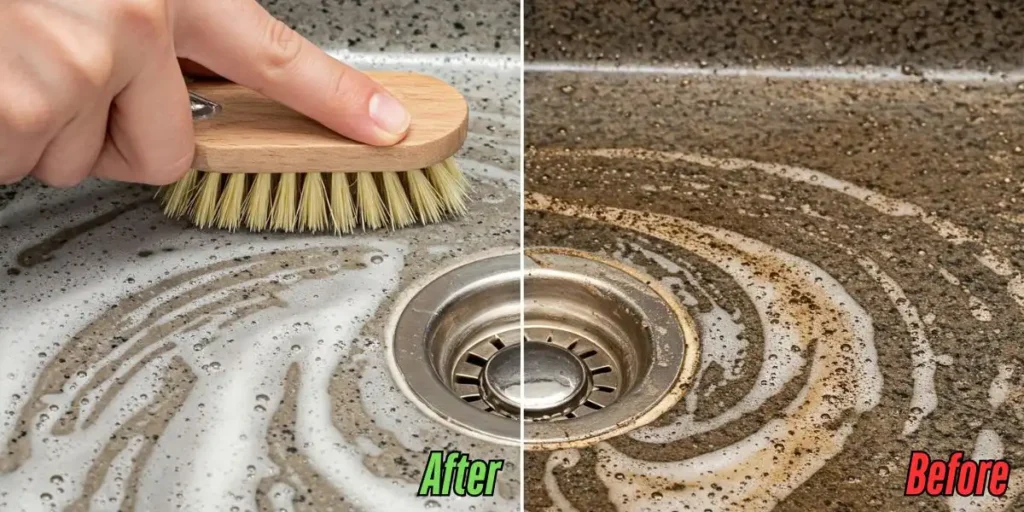How to Clean a Folding Knife Properly: Essential Tips and Tricks
A folding knife is not just a tool but your everyday carry companion for quick tasks, camping, and emergencies. So regular cleaning and maintenance are the backbone of keeping it in good shape. This is a step most knife owners need to pay more attention to, resulting in rusting knives that cannot hold an edge and the overall inability of these tactical weapons to do their job. If you use your folding knife, whether you’re an avid outdoorsman, a DIY enthusiast, or just someone who likes to have a sharp tool on hand when it comes in handy, knowing how to clean and maintain one properly is essential. Today, I will walk you through some fundamental yet practical cleaning methods that can prolong the life of your knife and have it ready when you are.

A folding knife is not just a tool but your everyday carry companion for quick tasks, camping, and emergencies. So, regular cleaning and maintenance are the backbone of keeping it in good shape. This is a step most knife owners need to pay more attention to, resulting in rusting knives that cannot hold an edge and the overall inability of these tactical weapons to do their job.
If you use your folding knife, whether you’re an avid outdoorsman, a DIY enthusiast, or just someone who likes to have a sharp tool on hand when it comes in handy, knowing how to clean and maintain one properly is essential. Today, I will walk you through some fundamental yet practical cleaning methods that can prolong the life of your knife and have it ready when you are.
Why is cleaning your folding knife necessary?
The first and foremost reason for keeping your folding knife clean is rust prevention! Since stainless steel—the most common material used in folding knives—is still made of iron, it is prone to rust when exposed to moisture and oxygen. A rusty blade will prevent it from being weak enough to chip or break during use. Moreover, dirt accumulation can create friction between moving parts of the knife, causing stiff and open too hard blades.
Cleaning it regularly also ensures that the blade stays sharp. Your knife will gather tiny bits from the stuff you cut, leaving residue on its edge and dulling it over time. Cleaning removes these particles, allowing your knife to remain sharp and ready for any job.

Tools needed for cleaning a folding knife
The first step before we get into the cleaning process is to bring together all necessary tools so you can get a clean and complete job done. So, here is a list of what you will be needing:
- Slightly soapy water or cleaning soap: Select delicate, if vital, and mildly or even harmful (i.e., clean surfaces/accounts without damage) to help get the dirt and grime up without damaging it.
- Warm water: Washing with warm water can improve the cleaning process, saturating soap and washing out complex dirt more easily.
- Soft cloth or sponge: Use a soft cloth or non-abrasive sponge to prevent scratching surfaces. This is especially important for fragile things that need a gentle hand.
- Toothbrush (optional): A toothbrush is helpful if you require a small, more detailed brush to get into detailing crevices.
- Oil (mineral or silicone-based): Oil helps to smooth the operation and extend the life of moving parts. Pick one that fits the materials you are working with.
So, be prepared with these valuable tools for a quick and perfect cleaning process!
Step-by-step guide to cleaning your folding knife

- Take your Pocket knife apart according to the portfolio as needed. The pivot screw on most folding knives is adjustable with a Torx key or flathead screwdriver.
- Once the knife is taken apart, you can wash all the different parts using warm water and mild soap or detergent. Use a sponge or soft towel to remove dust and debris. You can also use a toothbrush to reach into tiny nooks.
- Wash every part with warm water and lay them to dry thoroughly with a soft cloth. The goal is that there should not be a single drop of moisture on the blade and the other metal parts because moisture leads to corrosion.
- Then add a small amount of lube to the edge as well as any other moving parts, such as the pivot screw and washers. This will minimize friction and allow your knife to open freely.
- Assemble your folding knife back to its original condition, being careful all parts are in their place. Using the Torx key or screwdriver, tighten up the pivot screw carefully, not to over-tighten it because this will make the knife stiff.
- Use a clean cloth to remove excess lubricant on the blade and handle.
- Now, your pocket knife is clean and ready to deploy!
How Often Should You Clean a Folding Knife?
How often you clean your folding knife depends on how often you use it and the conditions in which you use it. If you frequently use your knife in wet and dirty places—like camp, hiking, or DIY work—you must wash it very well after each use. This protects against moisture and debris that can rust or dull the blade.
For the rest of you who seldom use your knives, cleaning them monthly should do the trick. While cleaning it, during this maintenance check, your blade and handle must experience insistent pressure, and the pivot joints are no exception to being exempted from being put under scrutiny.
Consistent maintenance does not only help to avoid the buildup of dirt; more importantly, it guarantees that your knife is sharp and ready for use when you send it into action. Maintaining your knife will prolong its lifespan and function, making it a staple tool in your kit.
Can You Clean a Folding Knife Without Taking It Apart?
While you can clean a folding knife without disassembly simultaneously, taking it apart provides a better cleaning with recommended effectiveness. If you do not want to take your knife apart, begin by using a small brush (like an old toothbrush or purpose-built cleaning brush) with soft bristles to clean away any debris or dirt on the blade and handle. Focus on the nooks and crannies that grime loves to collect in.

A pressurized air canister is also extremely helpful for cleaning out dirt and dust trapped inside the knife joints and pivot points because you want to ensure nothing in there could hinder the knife’s operation.
Following brushing and the air canister, it is wise to wipe down the blade with a damp cloth to remove any contaminants on the surface from fingerprints or oil that would have accumulated through use.
Last but not least, after the cleaning process, dry the blade with a cloth before storing the knife, as any humidity can create problems like rust and corrosion. This attention to detail does wonders when it comes to prolonging the lifespan of your folding knife.
What Cleaning Products Are Safe for Folding Knives?
This is important because using the incorrect cleaning supplies can damage your pocket knives. For general cleaning, mild soap and warm water are safe. For more stubborn dirt or rust, choose a special knife cleaning kit that contains rust removers and polishing products. Want to maintain the finish of your knife? Use only non-abrasive finishes. Household cleaners with strong chemicals can damage the cleaning angle and handle, so these should be used only if there are no other options.
To keep your knife in top shape, you must use the proper cleaning supplies without damaging it, so choosing wisely is extremely important. For general cleaning, mild soap and warm water are safe – they help wash away dirt or debris while preserving the integrity of the knife. A specialty knife cleaning kit is probably best for tougher stains, grime, or even rust that can build up over time. These usually come with rust removers, polishing agents, and soft cloths for knife maintenance.
First things first — make sure any cleaning products you use are non-abrasive. This method protects the knife’s finish and avoids making scratches that could compromise its functioning and appearance. Do not use harsh chemical household cleaners like bleach or ammonia because the blade will rust, and the handle can become damaged. It is essential to always care for your pocket knife to look good, but more importantly, it works well when you want it.
How to Prevent Rust on a Folding Knife
Rust is the bane of metal blades, but it’s easy to prevent with proper care! Once your knife is spotlessly clean, give the blade and joints a light wipe of oil. This provides a protective seal against moisture, which is crucial in protecting against rust.

Storing your knife in a dry place is obvious, but prepare silica gel packs or other desiccant materials to absorb moisture in the air where you store it. It is also recommended not to place your knife on the surface but inside a sheath or magnetic strip so there are no scratches or damaged handles.
It is essential to check your knife regularly for any signs of rust. If you spot any rust spots, give the area a quick sand down or use a rust eraser to tackle the corrosion right away. Conducting these preventative moves can extend the life of your knife and ensure that it is in the best possible condition for all your slicing needs. It only takes care and attention to keep your blades nice and functional—free of rusting over many years.
Steps to Clean a Folding Blade
Cleaning a folding blade is relatively simple but involves some crucial steps to ensure your knife stays in tip-top shape. Your knife staff will need and contain nice actions shrugged, so first gather your knife cleaning kit of essentials, be they soft brushes or toothbrushes, mild soap, warm water, and a sharp face lube (knife lube) suitable for knives.

Step 1: Use the soft brush to lightly go over the outer blade and handle to remove any dirt, debris, or grime that has built up, especially in crevices. After that, rinse your blade using mild soap and warm water with a soft cloth or sponge to prevent scratching the surface. Remember to clean the blade on both sides and the pivot point where it folds.
Post-wash, hold the blade under the running water, wash away all of the remaining soap, and then dry off immediately using a soft, lint-free cloth to avoid any possible water stains or rust spots from forming. After the blade is dried off, lubricate the moving parts, like where they pivot or lock, with a few drops of oil to reduce corrosion and allow smooth operation.
Lastly, if the knife has removable parts, replace them carefully. By following these steps in detail, you can maintain the appearance of your knife and keep it functioning like butter for years to come.
Common Mistakes to Avoid When Cleaning a Folding Knife
Avoid these common mistakes to prolong the life of your folding knife. First and foremost, never clean with anything that will scratch the blade or handle. Once they are scratched, the functionality and aesthetics of both are destroyed. Instead, use soft cloths or specialized knife cleaners to clean them safely.

Another maintenance item is lubrication, which is essential for smooth operation. Over-lubrication can lead to dirt build-up, creating a sticky layer that affects performance. So, do not squirt tons of oil; instead, try a high-quality lubricant dedicated to knives.
Always remember to fully dry your knife before putting it away. Moisture-caused rust will not only dull the blade but can cause permanent damage. After you wash your knife or have used it, a towel can help ensure that your knife is not wet.
Closing a folder or assisting often requires you to follow the manufacturer’s recommendations closely. This not only ensures your safety but also the safe handling of the knife mechanism to prevent any damage that could render it useless after prolonged use. These precautions will keep your pocket knife in the best working condition for years.
Essential Tips for Long-Term Folding Knife Maintenance
This is the essential thing to do for your knife after regular use and maintenance. Still, it will prove instrumental in keeping your folding knife suitable for a long time, including looking for any nicks or dullness on the blade and examining the handle for any cracks or looseness.
Utilize an appropriate sharpening instrument, be it the whetstone or a honing rod, to ensure that the blade is sharp and ready for action, assuming there will be any. Ensure you clean your knife after each usage so no residue is left; otherwise, its efficiency will be reduced.
Regarding storage, always place your knife dry with a secure sheath away from moisture and chemicals since these elements lead to rust. Joining something like the EDC (Everyday Carry) group can teach you how to fix a folding knife from friendly people who know way more about quality gear than you do.
Quality-maintained folding knives will last long while providing the best cutting utility for food, crafts, or outdoor trips. Maintaining your knife can be a breeze with the right equipment and knowledge. If you follow these tips, you can benefit from your trusty folding knife over many years of faithful service. Stay sharp, clean, and rust-free; the wearer is always just a few steps away!

Frequently Asked Questions (FAQ)
It is preferable to clean your folding knife after every use to keep it in good working condition. Cleaning it regularly will prevent residue from accumulating and damaging the blade over time (if your knife is made of metal or non-carbon).
You should not put motor oil on your knives. Unlike all-purpose oils, which can become sticky and attract dust and dirt, causing poor performance, motor oils are specifically formulated to repel corrosion but not stick.
Utilize a whetstone or honing rod for the best sharpening. These tools allow for very controlled edge work with the blade and help to ensure that a knife can remain sharp. Always follow the manufacturer's recommendations for angles and techniques pertaining to sharpening.
You can disassemble your knife if that is what it was designed for, and the manufacturer will tell you how. However, if you need more confidence about reassembling it correctly, it can cause damage.
If you see any rust, softly clean it off with a rust eraser or superfine sandpaper, being careful not to grind away steel from the blade. Once the rust has been cleaned off, wash and dry the knife to ensure no moisture remains before applying an oil coating. This will help keep your tool from developing rust again soon.
Conclusion
Good folding knife care means that you have an invaluable tool you can depend on for every job you come across. From the depths of the heart of darkness to day-to-day chores, a well-maintained knife will not ditch you. With these steps and the best method for cleaning a pocket knife, you can prolong your folding knife’s lifespan and improve your experience overall! If you are using a knife for the first time, ask experienced collectors or join workshops to perfect the art of maintaining knives. So, as long as you follow these tips, you can get years of use out of your old, reliable folding knife.
Happy cleaning!
Related Posts
-
 30 Nov 2024 CleaningBest Ways to Clean Granite Composite Kitchen Sinks at Home
30 Nov 2024 CleaningBest Ways to Clean Granite Composite Kitchen Sinks at Home -
 26 Nov 2024 CleaningHow to Clean Stainless Steel Countertops | Experts Tips
26 Nov 2024 CleaningHow to Clean Stainless Steel Countertops | Experts Tips -
 17 Nov 2024 Cleaning5 Tricks | How to Clean Shower Head Without Vinegar
17 Nov 2024 Cleaning5 Tricks | How to Clean Shower Head Without Vinegar -
 14 Nov 2024 CleaningHow to Keep Damascus Steel from Rusting: Easy Care Tips
14 Nov 2024 CleaningHow to Keep Damascus Steel from Rusting: Easy Care Tips -
 13 Nov 2024 CleaningHow to Clean a Folding Knife Properly: Essential Tips and Tricks
13 Nov 2024 CleaningHow to Clean a Folding Knife Properly: Essential Tips and Tricks -
 13 Nov 2024 CleaningHow to Clean a Ninja Blender Quick Tips & Tricks for a Deep Clean
13 Nov 2024 CleaningHow to Clean a Ninja Blender Quick Tips & Tricks for a Deep Clean -
 12 Nov 2024 CleaningHow to Clean Rust off of a Knife: Tips for Long-Lasting Blade Care
12 Nov 2024 CleaningHow to Clean Rust off of a Knife: Tips for Long-Lasting Blade Care -
 23 Oct 2024 CleaningHow to Clean Grout That Has Turned Black: Expert Tips & Tricks
23 Oct 2024 CleaningHow to Clean Grout That Has Turned Black: Expert Tips & Tricks -
 19 Oct 2024 CleaningHow to Clean Blackstone Griddle for Long-Lasting Performance
19 Oct 2024 CleaningHow to Clean Blackstone Griddle for Long-Lasting Performance -
 19 Oct 2024 CleaningHow to Clean Burnt Stainless Steel Pot With Baking Soda
19 Oct 2024 CleaningHow to Clean Burnt Stainless Steel Pot With Baking Soda










